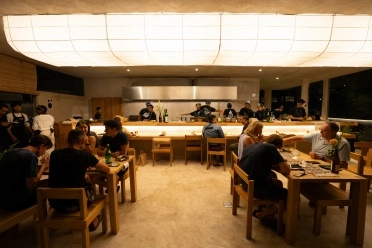In Bali, where daily life is deeply intertwined with spirituality, offerings are a vital part of expressing gratitude and devotion to the divine. While colorful and fragrant Canang Sari offerings are widely known, a simpler yet equally meaningful daily practice is Banten Saiban. Often called "Jotan," this humble offering holds a unique place in Balinese Hindu tradition.
Banten Saiban: Bali's ‘Little Big’ Offering of Spiritual Nourishment
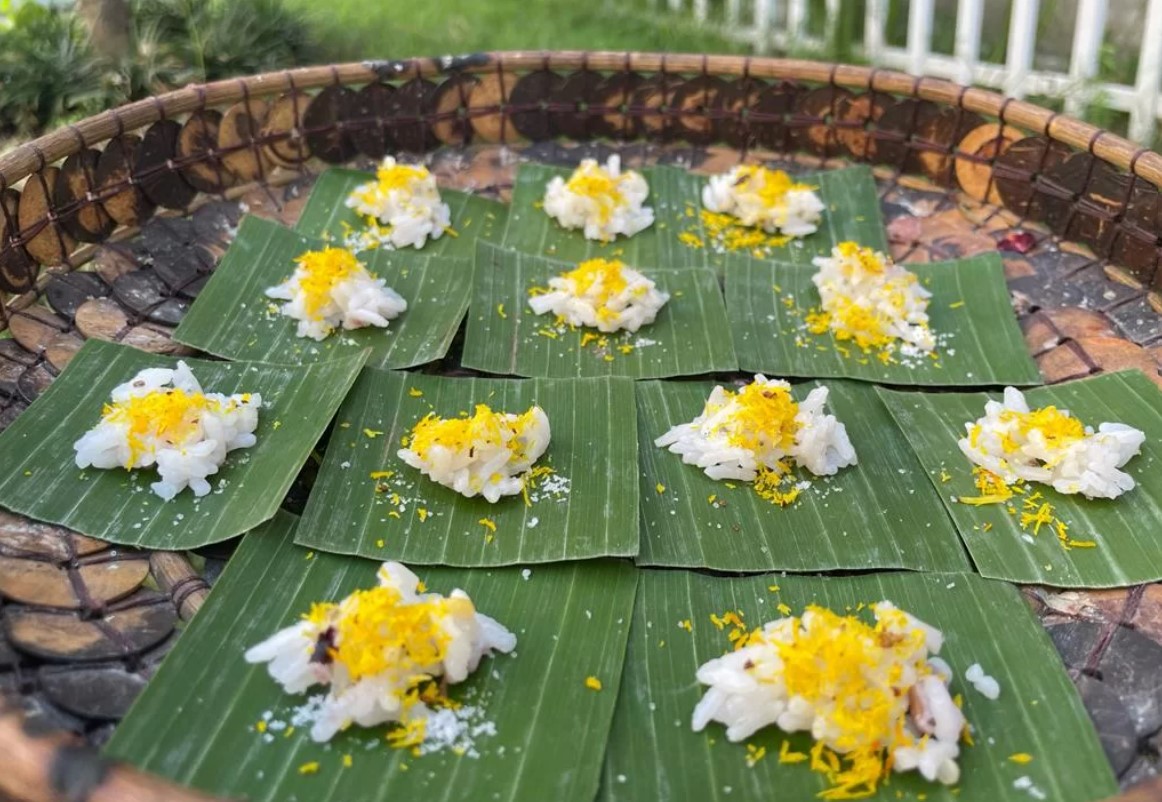
What is Banten Saiban?
Banten Saiban is a small daily offering made from a simple combination of rice and other foods like vegetables, fish, or meat, placed on a small square of banana leaf or another type of leaf. Unlike the more elaborate Canang Sari, which is crafted with coconut leaves, flowers, and incense, Banten Saiban is straightforward, symbolizing the essence of gratitude and humility. It is a part of the Nitya Yadnya, or daily rituals, representing one of the simplest forms of devotional practice in Balinese Hinduism.
Purpose and Philosophy
At its core, Banten Saiban serves as an expression of gratitude towards the divine, ancestors, and the natural elements. It is prepared and presented every day after cooking or before eating, reinforcing the belief that offerings come before self-nourishment. The offering consists of a small portion of the food that is prepared, representing that all nourishment is a gift from the divine. This practice aligns with the principle of Yadnya Sesa, meaning the offering takes precedence over eating. The rice and accompanying foods are seen as a “sample” or token that represents the whole meal, emphasizing that the first portion is always reserved for the divine and the unseen spirits.
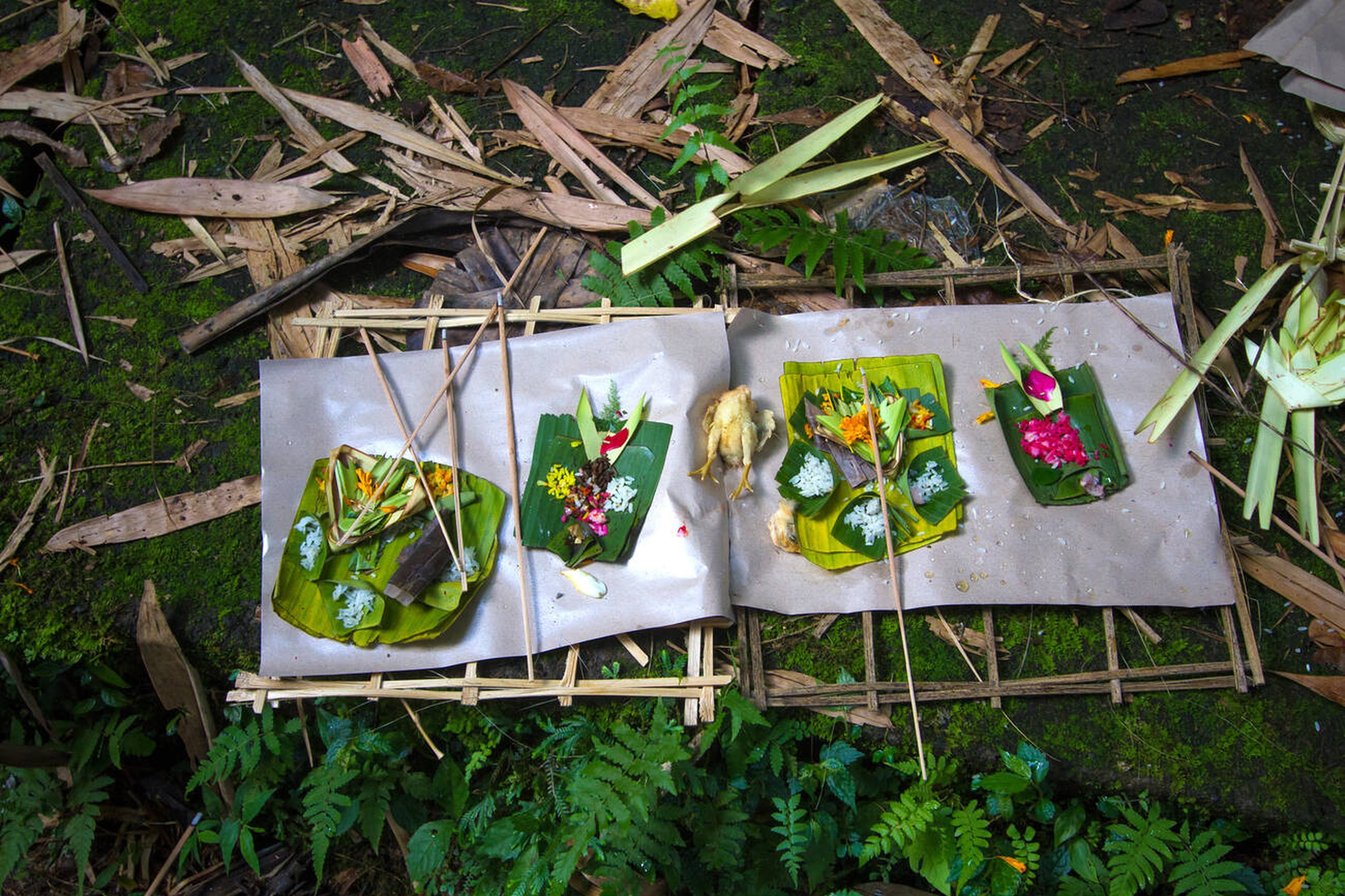
Whom It Offered To?
Banten Saiban is offered to various entities, each holding significance in Balinese spiritual life:
Gods and Deities: As a sign of thankfulness for the blessings bestowed, it is presented to God or the deities worshiped in the household.
Ancestors: The offering honors the spirits of ancestors, particularly before the "Memukur" ceremony (a ritual of final purification) is conducted, seeking their protection and guidance.
Panca Maha Bhuta: These are the five great elements in Balinese cosmology—earth, water, fire, air, and ether—offered to prevent any disturbances they might cause.
When and Where It’s Offered?
The ritual of Banten Saiban is typically performed in the morning, right after cooking is completed. It can be placed in several locations around the home:
Kitchen or Stove: Representing the god Brahma, who is associated with fire.
Water Source or Well: Symbolizing Vishnu, the preserver, and protector.
Rice Storage: Dedicated to Dewi Sri, the goddess of rice and fertility.
Home Entrance or Gate: To honor the spirits and guardians of the household.
Family Temple or Altar: As an offering to the deities and divine manifestations.
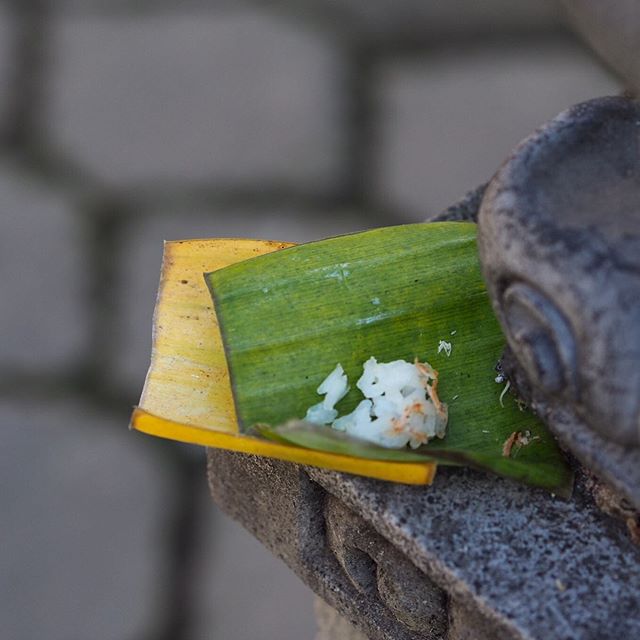
The offering is also placed on household tools and equipment like the grinding stone, broom, or water jars, acknowledging their vital role in daily life. This act signifies respect and appreciation for the objects and elements that support the family’s daily existence.
How to Prepare
Preparing Banten Saiban is simple and does not require specific materials. It usually involves:
A small square of banana leaf, around 5 cm in size.
A pinch of rice.
Any side dishes cooked that day, such as vegetables, fish, or meat.
There are no strict rules about the food placed in the offering—it reflects whatever was prepared that day. This flexibility makes it accessible and easy for every household to participate in, regardless of their financial status or available resources.
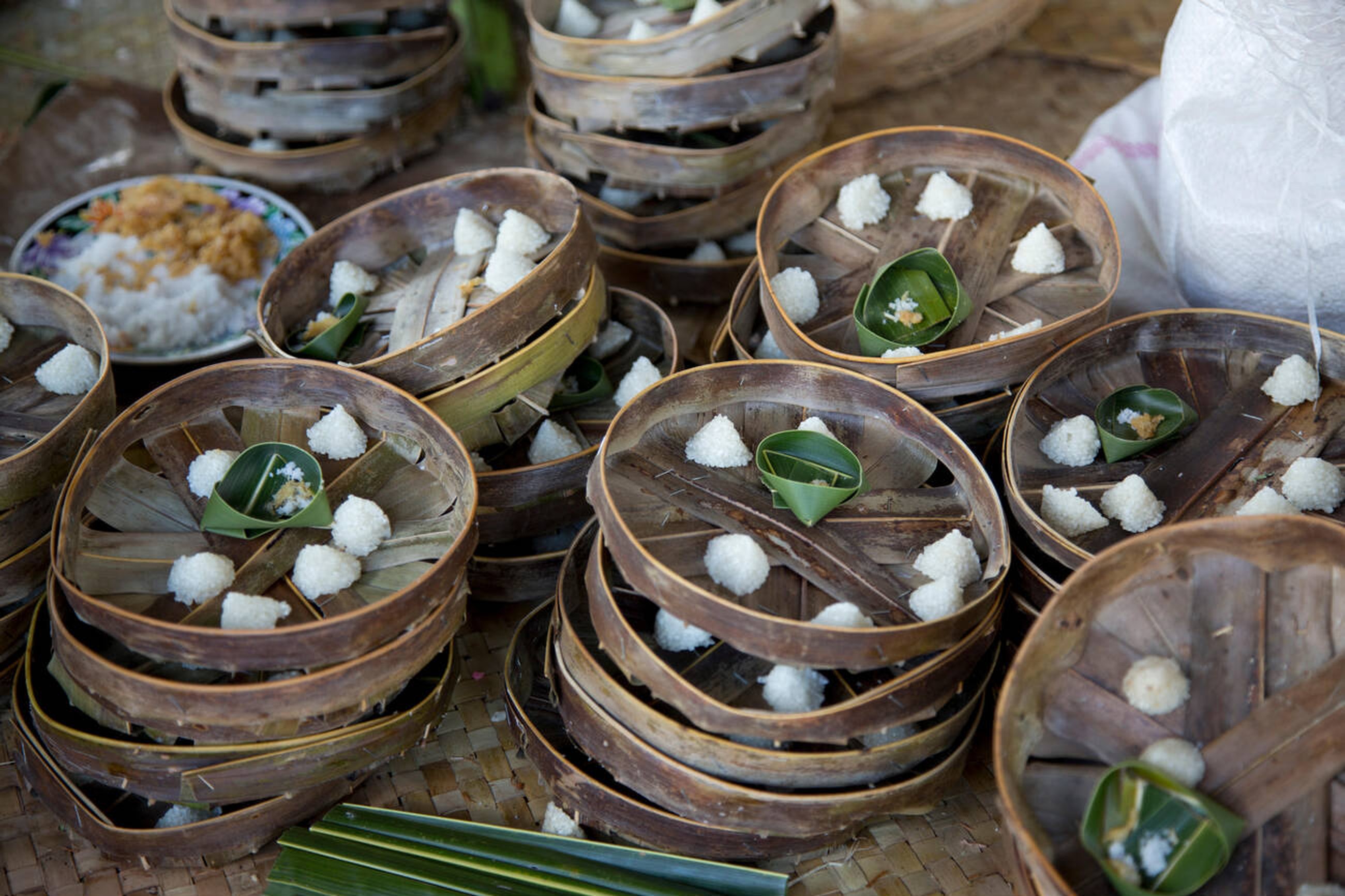
The Significance of Rice
Rice is the staple food in Bali and holds deep cultural and spiritual meaning. It represents life, prosperity, and sustenance, making it an essential component of the offering. By dedicating a small portion of rice to the divine before consuming it, Balinese Hindus express their acknowledgment that all nourishment comes from God’s blessings.
The Deeper Spiritual Meaning
The practice of Banten Saiban embodies the Hindu principles of selflessness (Anersangsya) and prioritizing others (Ambeg Para Mertha). It teaches that life’s blessings are to be shared and that one should not be self-centered in seeking happiness. By offering the first portion of the meal to the divine, individuals purify their food and, metaphorically, their souls, as mentioned in the Bhagavad Gita (Chapter 3, Verse 13):
"Those who eat only after offering their food in a sacrifice are released from all kinds of sins. Those who cook for themselves alone eat only sin."
Why It’s Essential in Balinese Hindu Life
Though small and simple, Banten Saiban reflects the deep spiritual values embedded in everyday Balinese life. It is a daily reminder of the interconnectedness between humans, the divine, nature, and ancestors. This act of gratitude, humility, and devotion allows Balinese Hindus to maintain harmony and balance within their lives and surroundings.

While Canang Sari offerings may catch the eye with their vibrant colors and intricate designs, Banten Saiban offers a quieter, more humble form of devotion that underscores the daily spiritual practices of Balinese Hindus. Simple yet profound, it is a beautiful reminder that spirituality is not just about grand ceremonies but also about small, consistent acts of reverence and gratitude performed every day.



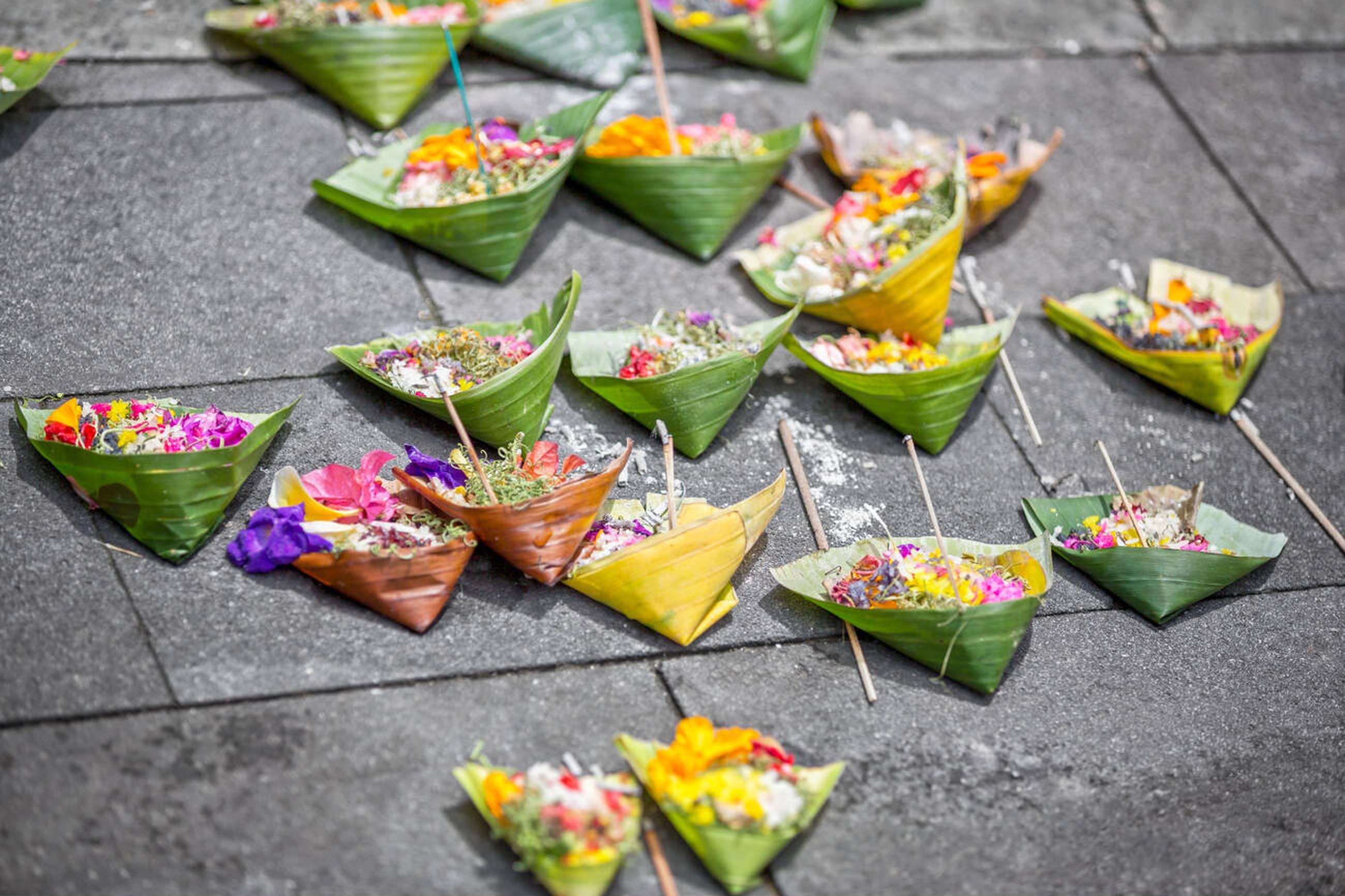
 Billy Bagus
Billy Bagus
 Sep 13, 2024
Sep 13, 2024






